Angel's Scent
Client Background
Angel’s Scent PH is a small-scale business, founded in 2018, aiming to deliver handcrafted perfumes to men and women. It was founded by Ms. Ardenio, and is currently operating in Makati City, Philippines. The company's central vision as a business is to incite consumer confidence through the power of curated scents. With its target audience of men and women belonging to the middle class, the brand consistently aims to provide reasonably-priced, quality fragrances. In addition, the business also aims to provide extra business opportunities to resellers by acting as a supplier of curated perfumes available for distribution.
To market its products, the company utilizes two platforms to communicate with its potential customers: Facebook and Carousell. Most of the business processes are done on the respective messaging channels of the two platforms. Such functions include responding to inquiries, placing orders, payment verification, and shipment information.

Role Overview
Project Time: July 2021 - September 2021
Role: Product Owner
Our team followed the Scrum framework for project management. I was appointed to be the Product Owner, which is the one accountable for creating the product vision, maximizing the product's value, and managing the team's workflow. Throughout the project timeline, my responsibilities are listed as follows:
- Interact with the client
- Create the Software Requirements Specifications
- Create the product backlog and sprint plans
- Spearhead every scrum meeting
- Ensure that the team is in line with the planned schedule
- Demonstrate the software solution to the client
- Sign off the software solution to the client
Dissecting the problem
Curating a software solution from scratch is more challenging than one may think. The product vision must be able to contain the business processes and technicalities, all while simultaneously catering to the user experience. With this, I began interviewing the client about their business processes to gain an idea of the possible functionalities of our proposed software solution. The business model can be visualized with the following diagram.
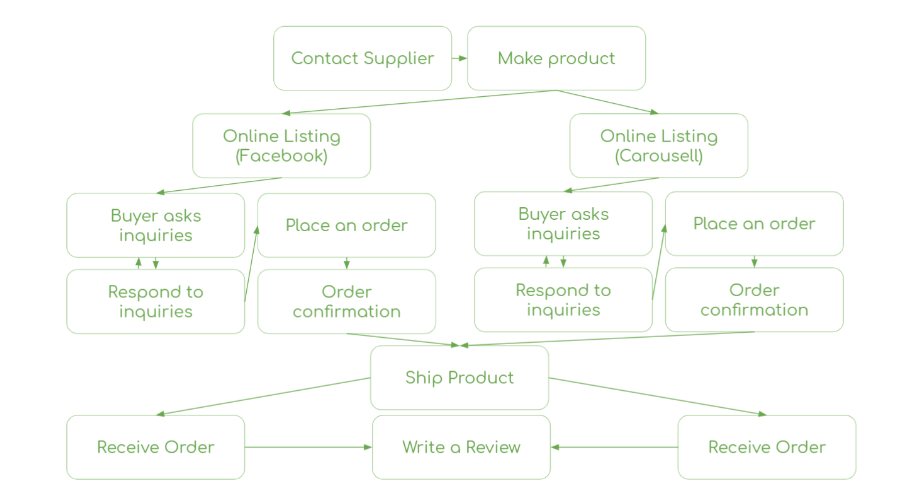
As mentioned, Angel’s Scent PH markets its product through two major platforms: Facebook and Carousell. After creating a deal with its consumers, the company verifies the buyer’s payment and ships the products accordingly. Once the consumer receives their order, they are encouraged to write a review about the product via the respective review channels of each platform.
From the diagram itself, the current business process is already too complex. Using two different platforms when interacting with potential clients poses a disadvantage to the business, which may lead to a loss in potential sales. Moreover, the absence of a unified platform prevents the company from highlighting its brand identity due to the fierce competition in established selling platforms. I summarized these findings in the table as follows.
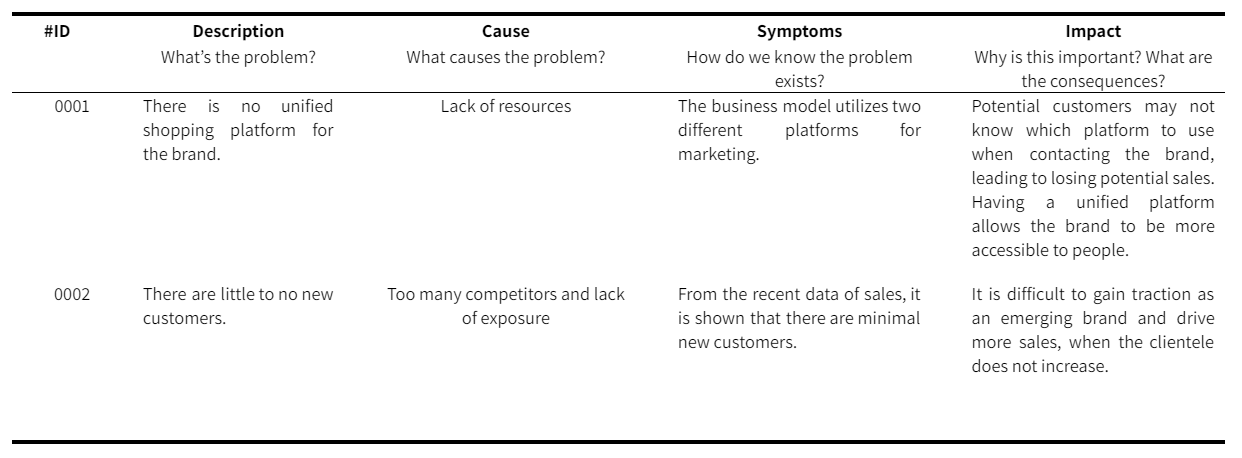
Proposed Software Solution
Because of the problems presented, I suggested a simplified business process so that there is only one platform for all the operations. Instead of having the seller go back and forth between two platforms while simultaneously responding to different inquiries, the proposed software solution aims to bridge this gap between these processes.

Understanding the Users
From the interview, I discovered that there are two main categories of users in the business process. Each role description and its tasks are listed in the table below. This summary anchors the primary functions of the software application.
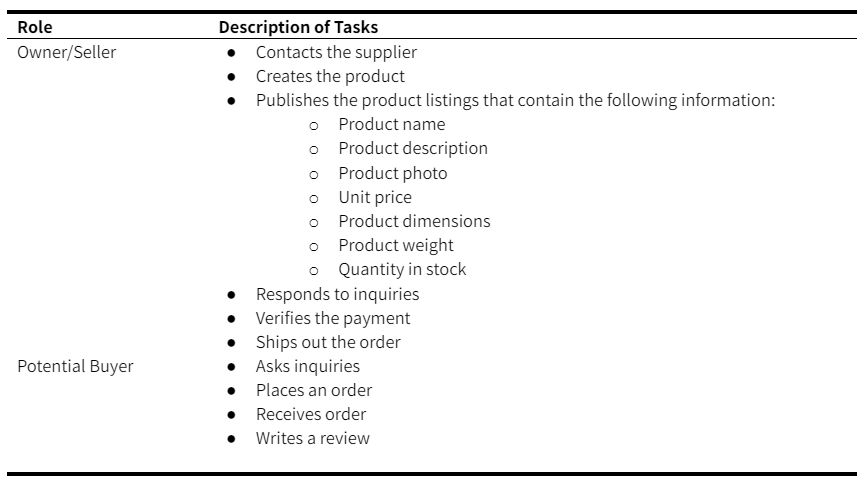
Development of the Product Backlog
A user story narrates possible scenarios from a role's (owner or buyer) perspective when interacting with the software. The business processes presented earlier is framed in the context of a user story to lessen the technicalities, and allow each feature to be easily understood by each team member. After dissecting the problem, I created the Product Backlog containing 11 user stories to have a detailed list of what needs to be accomplished.
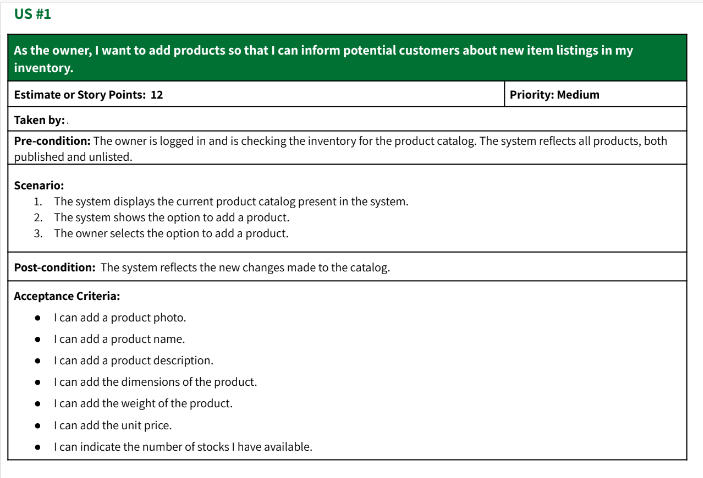
Each user story contains the following features:
- Estimate or Story Points -- A numerical figure that denotes the importance of each feature. Adding all story points must equate to 100.
- Priority -- Denotes the urgency of when the feature needs to be accomplished. This also considers the design, development, and quality testing aspects of the feature.
- Taken by -- The team members in charge of developing the feature
- Pre-condition -- The prerequisite needed to implement the feature
- Scenario -- Describes the current state of the application when this feature is applied
- Post-condition -- The intended effect after the feature is used
- Acceptance Criteria -- Criteria for marking the user story as resolved
- Subtasks -- Detailed outline of tasks to be performed
The product backlog has allowed the team to achieve transparency during development. Since the milestones are listed in an organized manner, our team was also able to communicate effectively concerning the workload division.
Sprint Planning
Our team has worked closely throughout three sprints. Each sprint focuses on accomplishing a number of user stories, from design and development to quality testing. To plan these sprints, I prioritized each user story according to the estimated time it would take to accomplish and the complexity of each task. For example, user stories involving back-end functionalities would require more time and should be finished earlier. On the other hand, user stories dealing with only front-end functionalities are less complex and should be okay to be scheduled during the last sprint.
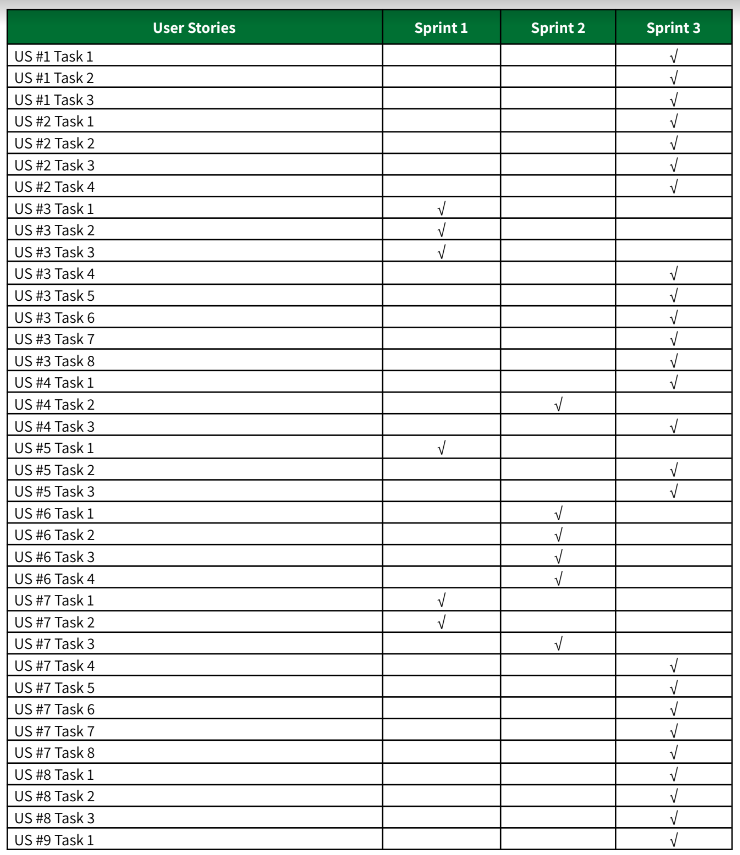
Our overall progress is tracked using a shared Trello board. We had bi-weekly meetings to discuss significant updates such as database designs and feature demonstrations. For minor updates, we used our team group chat to notify each team member.
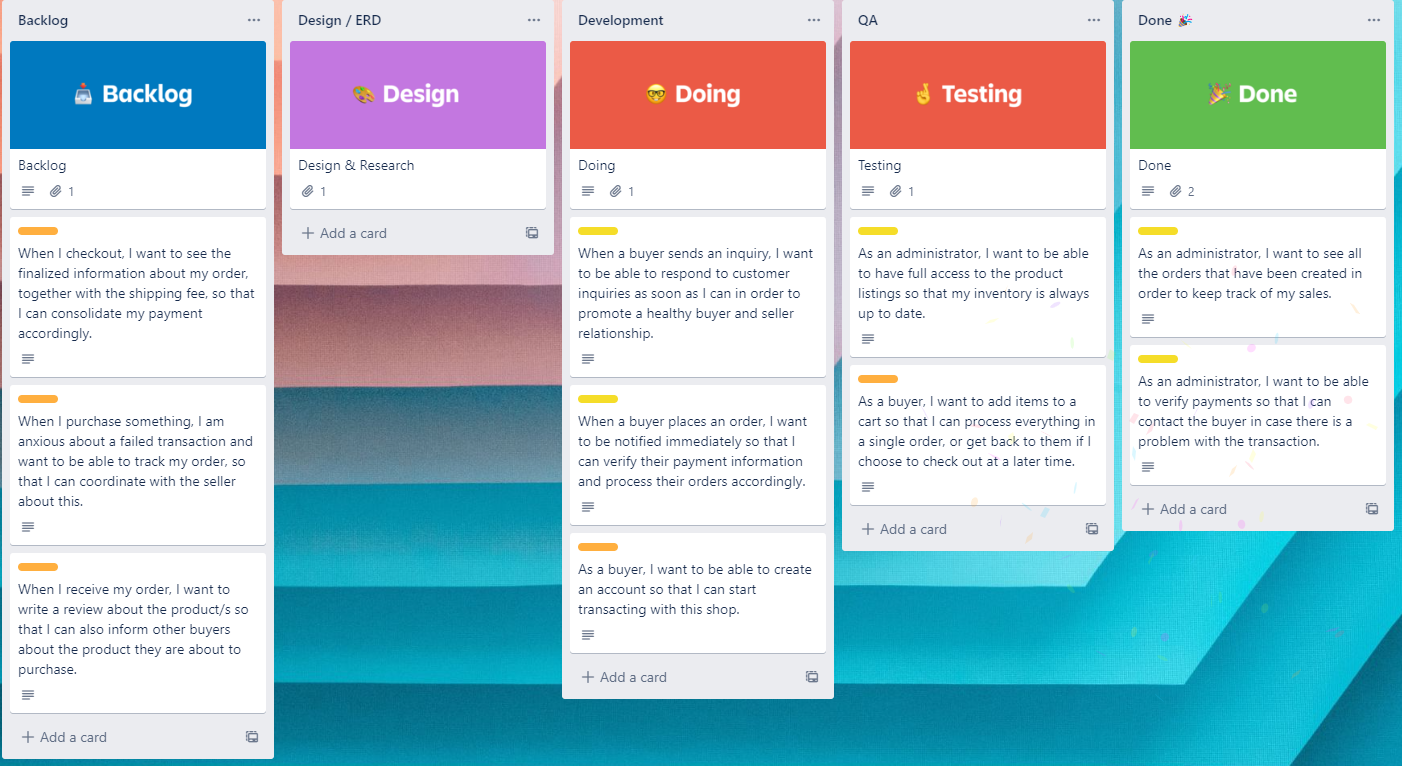
Demo
Our team was able to complete all user stories on time successfully. Our Quality Assurance Team thoroughly tested each feature to ensure no defects were present upon sign-off. The client signed off the application on September 17, 2021.
See more works